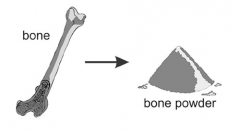

 Comptes Rendus Palevol
7 (2-3) - Pages 113-124
Comptes Rendus Palevol
7 (2-3) - Pages 113-124In many ways, palaeogenomics began when the first ancient DNA sequence was reported. This first sequence was derived from a stuffed museum specimen of the quagga, an extinct mammal related to the zebra. Unspecified and unselected DNA was extracted from the quagga specimen, cloned into a bacterial library, and then sequenced. It took another 17 years and the development of PCR before two independent groups successfully sequenced the complete mitochondrial genomes from several extinct moa species. Only 4 years later, using the original approach of cloning nonspecific ancient DNA extract and shotgun sequencing, the first ancient nuclear DNA sequences were determined, this time from the extinct cave bear. Since these early successes, palaeogenomics has rapidly expanded, because of both technological development and increasing interest in ancient DNA research. New methods, developed since the cave bear sequence was reported, have produced nuclear DNA on a megabase scale from two extinct species, the mammoth and the Neanderthal, our closest relative. For both species, low-coverage genome-sequencing projects have been proposed. It is likely that these will be successful, given the rapid technical development in sequencing techniques. This review carefully examines both the promise and the current limitations of palaeogenomic analyses for both mitochondrial and nuclear DNA.
Ancient DNA, Palaeogenetics, Palaeogenomics, Proboscidians, Neanderthal